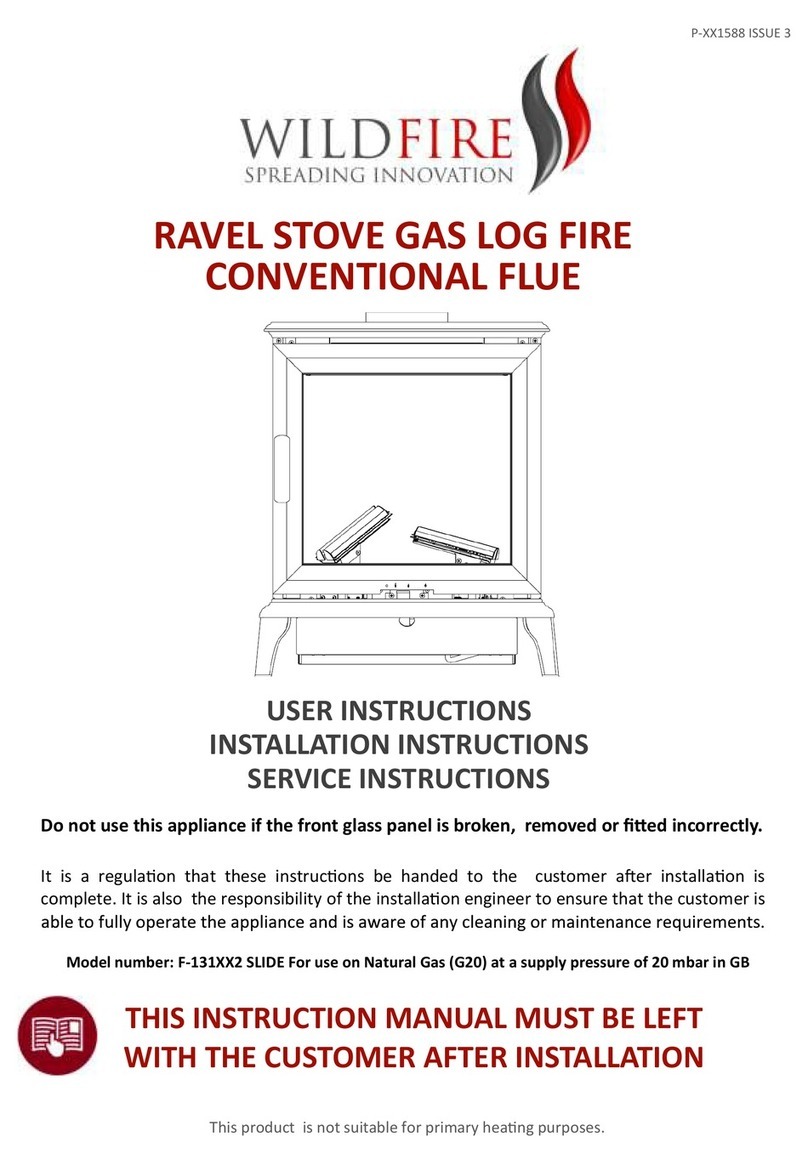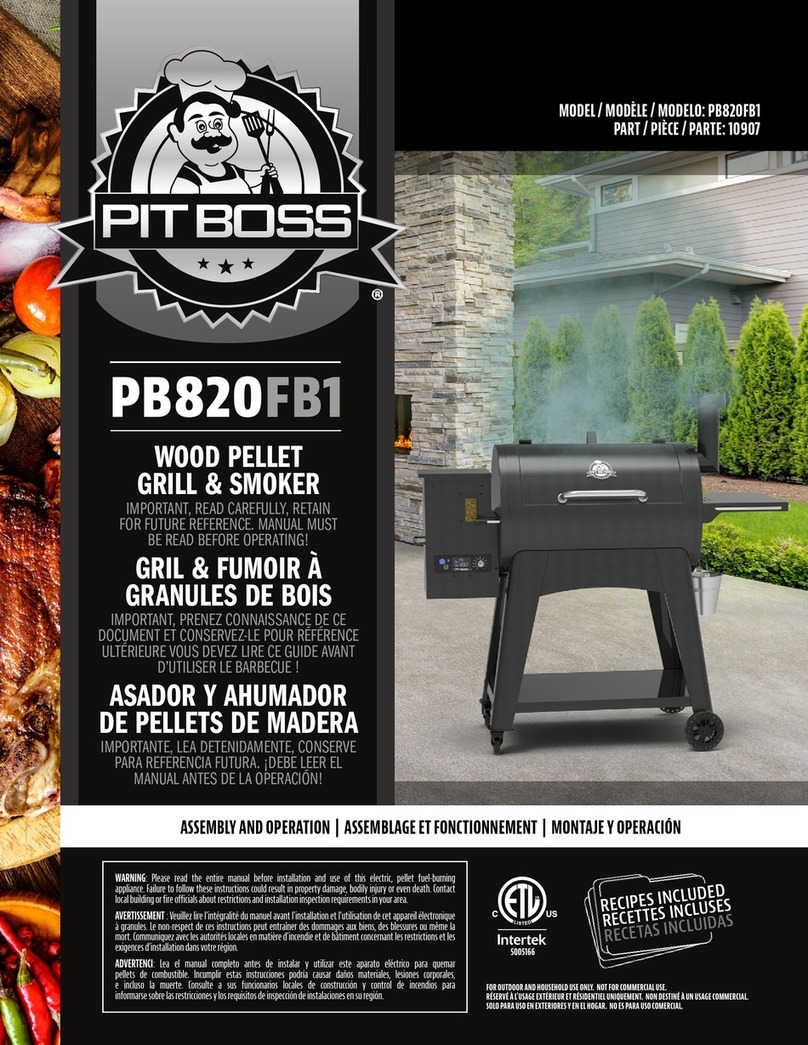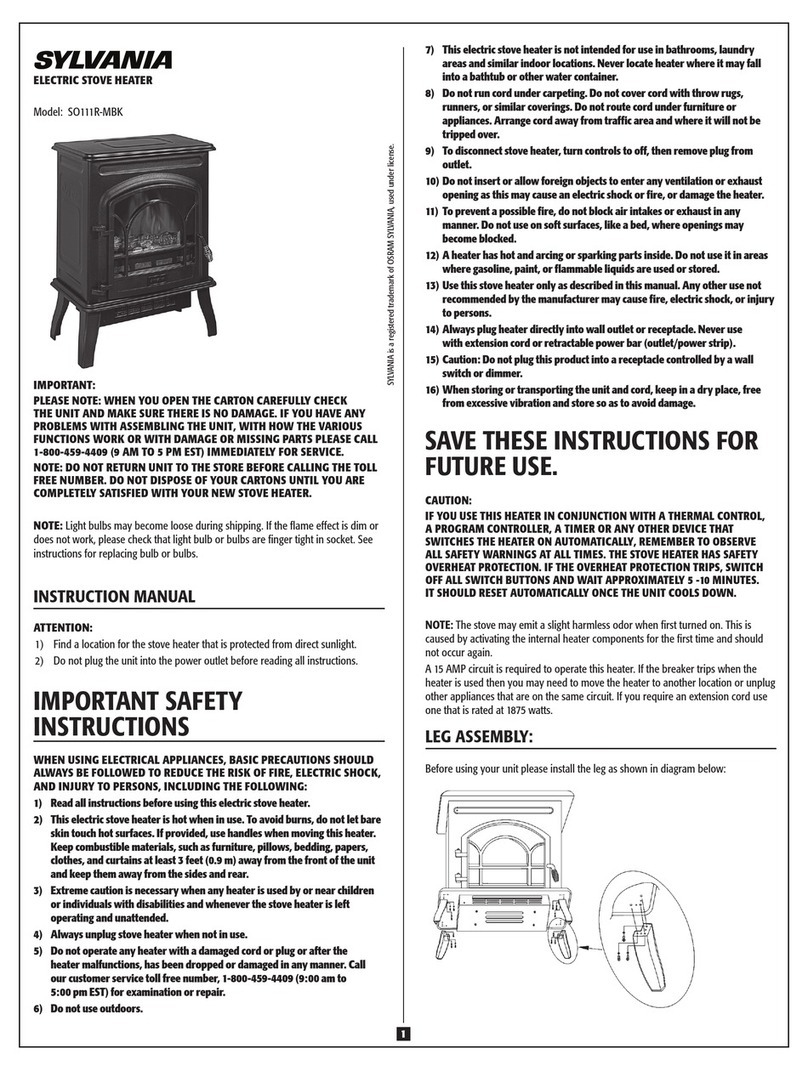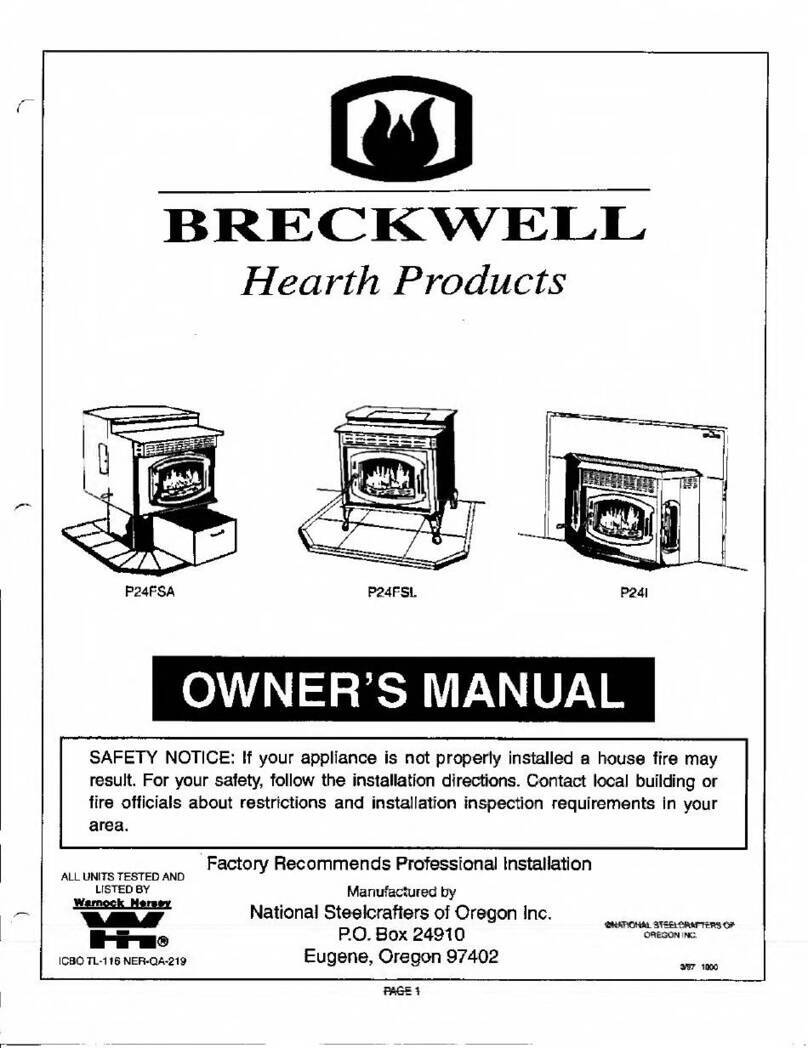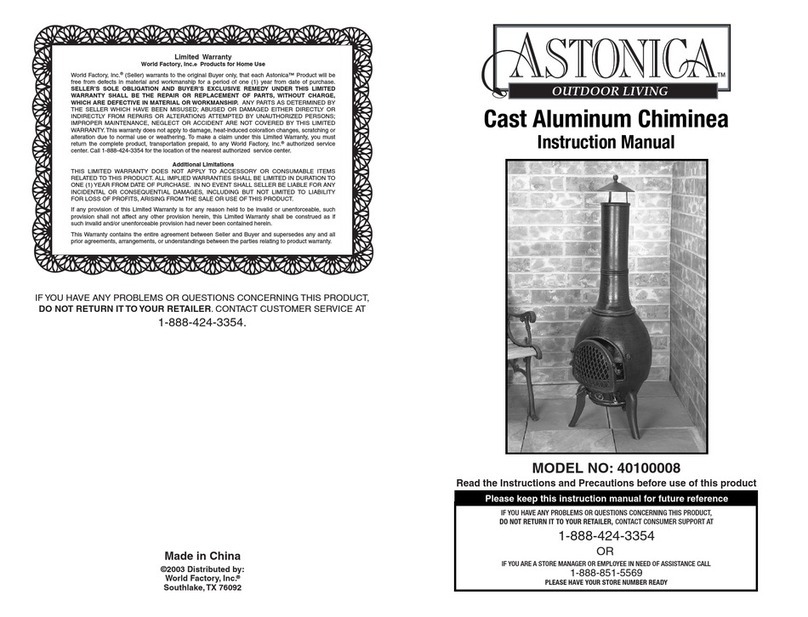10
EXTENDED BURNING
Loading a large a ount of wood into the stove all at once will reduce the te perature inside the stove.
If the te perature is too low, the gases given off fro the wood will be too cool to co bust resulting in
a lot of s oke covering the inside of the stove, including the glass, with soot. To co bat this proble
it is a good idea to increase the te perature of the stove before loading by further opening the air
inlets. Load the wood and leave the air controls open until the oisture is driven out of the wood and
the stove is back up to an efficient operating te perature. The air inlets can then be reduced to hold
the te perature steady. When loading wood, ake sure that the end grain of the wood is pointing
away fro the glass otherwise the oisture and gases co ing fro the end grain of the wood will dirty
the glass.
TYPES OF WOOD FOR FUEL
For best results use well seasoned hardwood such as Oak, Ash or Beech. Allow wood to dry out under
cover in well-ventilated conditions for at least twelve onths. Ideally oisture content should be
between 15% - 20%. Wood is ready for burning when radial cracks appear in the end of the logs.
Burning wood that is not seasoned will result in tar being deposited in the stove, on the glass and in the
flue ways. This build up of tar is a hazard and if it ignites ay cause a chi ney fire. Resinous softwood
burns well and gives a high output for short periods but is not as efficient and does not last as long as
hardwood.
PEAT
Peat is a fuel conveniently available in so e areas and should be burned in the sa e anner as
wood.
LIGHTING AND CONTROLLING THE FIRE
Before lighting the fire for the first ti e ensure that the grate is open and the baffle, side and back bricks
are in position. Burning without either will result in the stove castings overheating and being da aged.
Open the air wash control and the pri ary air control fully. Place so e tightly rolled paper on top of
so e cru pled paper on the base towards the back of the stove. On top of this, place so e s all
pieces of wood and on top of that a few s all pieces of ineral fuel. Light the cru pled paper and
close the door. Once the fire beco es established and the fuel is burning, ore fuel can be added.
When the stove is hot and the fuel is no longer producing s oke, the air wash control can be reduced.
The burning rate of the fire can now be controlled with the spinner. As air fro the spinner flows up
through the grate it will cool the grate bars preventing the fro overheating and beco ing da aged.
Reducing the spinner air inlet and introducing air only fro the air wash will allow the fuel to burn but
the grate will not be cooled resulting in da age to the grate bars. When controlling the fire, the spinner
should be altered gradually. Reducing the pri ary air dra atically and all at once on a hot stove will
cause the fuel to clinker and will result in a build up of gases and s oke which could ignite with a bang
the o ent air is reintroduced.
EXTENDED BURNING
Before adding a large a ount of fuel, the grate should be de-ashed and the ash pan e ptied. Add the
fuel, sloping it fro the front coal bar up to the back of the stove to the level of the top of the back
brick. Open the pri ary air inlet and let the fire burn for a period on high rate in order to get the stove
back up to te perature and drive off the oisture and gases in the fuel. If a lot of s oke is produced
on reloading, the airwash control can be opened further to keep the s oke back fro the glass. As the fire
SOLID MINERAL FUEL BURNING
The above text should be used as a guide only. The ideal operation of your stove
depends on a nu ber of factors, which vary with each installation, and so gaining
experience operating your stove is the only way to learn its best operation.
11
DOOR HANDLE ADJUSTMENT
gets back up to te perature, reduce the airwash control and reduce the pri ary air inlet to suit the
burning rate. The exact setting of the air controls depends on a nu ber of variables including: the flue
draught, the fuel used and the installation and so the best settings for your stove can only be
learned by experience.
ASH REMOVAL
The level of ash should not be allowed to build up to the level of he grate. If the level of ash beco es
too high the air through the grate will beco e restricted causing the grate bars to overheat and
preventing the fuel fro burning efficiently.
MINERAL FUELS
Ordinary bitu inous house coal is not reco ended and ust not be burned in s oke control areas.
Burning bitu inous house coal will result in a sooty stove and chi ney, and the stove glass will require
cleaning regularly. There are nu erous natural anthracites and anufactured s okeless fuels that will
burn cleanly and have ore reliable burning characteristics. A list of these fuels and their suitability is
produced by HETAS (www.hetas.co.uk). Consult your local fuel erchant to find out what is available
in your area. Petro-coke should not be used as it burns very hot and ay da age the stove castings.
CLEANING THE STOVE
The stove should only be cleaned when it is cold. The exterior can be dusted with a fir brush. Do not
use a cloth, as this will drag on the paint finish leaving lint on the surface. Fro ti e to ti e it ay be
necessary to renovate the exterior by repainting. High te perature stove paints in aerosol for are
available fro your stove dealer. Do not use this for of paint until the stove is cold and always read
the instructions on the container before starting to paint. The door glass is ade of a special heat
resistant cera ic and ay be cleaned when cold with proprietary glass cleaning liquids and a dry cloth.
SHUTTING DOWN THE STOVE (LONG TERM)
The following procedure should be followed if the stove is not to be used for a long period, su erti e
for instance. Re ove all the ashes fro the grate and ash pan and use a vacuu cleaner nozzle to
clean ash fro the base of the stove. Re ove the baffle and brush the flue ways. Close the door and
open the air inlet fully. This action will allow air to circulate through the flue ways and help to avoid
corrosion and condensation.
TO ADJUST THE DOOR HANDLE
Nut to be turned anti-clock wise to adjust the handle. Make sure the nut is then tightened again, once
the adjust ent has been ade.
Fig. 7 - Adjusting the Door H ndle

